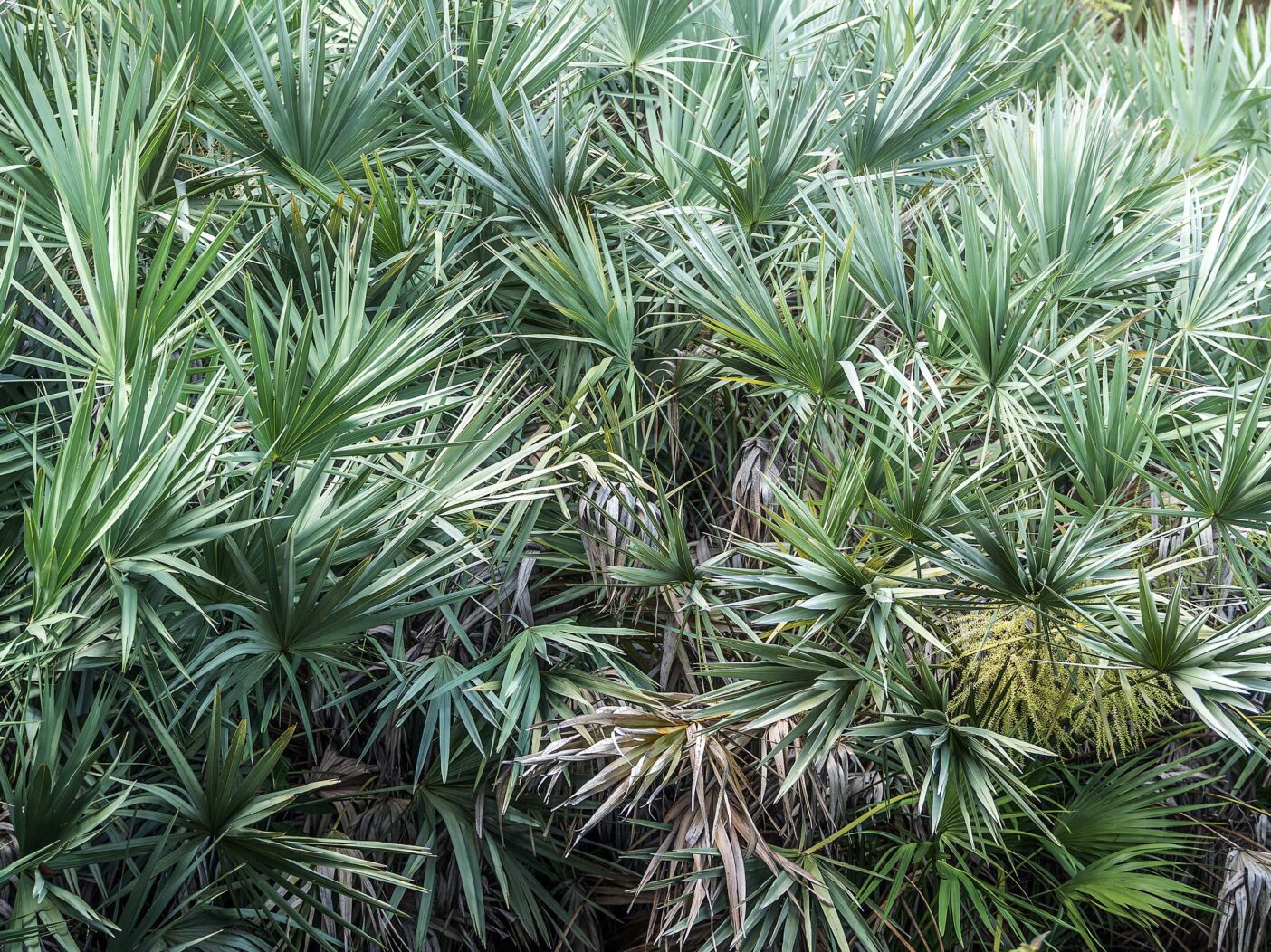
If I said the phrase “ancient forest,” what would you envision?
California’s towering redwoods? Piney Northern woodlands? The Amazon?
If you conjured one of those — or something similar — I’d be right there with you. I would imagine a place with tree rings too numerous to count and tops too high to see.
I would not consider saw palmettos, Serenoa repens, those low-growing palms blanketing much of Southwest Florida.
But one afternoon, I’m out in our Preserve with Natural Areas Manager Eric Foht when he pauses amid palmettos and remarks, “We have an old-growth forest right here, in a way.”
I wait for him to continue.
“Saw palmetto can be 5,000 years old, maybe more,” he says, and then explains a decades-long research project at Archbold Biological Station near Lake Placid to discover more about the saw palmetto, its growth patterns, and remarkable longevity. These dwarf palms creep horizontally along the ground at a mere 2 centimeters a year, researchers found. At that rate, it takes some 30 years to grow a single foot. Damage from fire or other injury prompts the plant to clone itself, sending new shoots off in different directions. A portion of the plant may die, but its clones continue to persist.
“Think of them as snails or snakes that just kind of meander across the forest,” Eric says. “They’re like a walking plant. They don’t stay put their whole lives.”
The portion by the trail’s edge is probably a few hundred years old, he estimates.
Age aside, saw palmetto has plenty of other special attributes. Once, in my news reporting days, a source pointed out a footpath, barely discernable, on the outskirts of Immokalee. It was undoubtedly used by locals hunting for the palm’s precious purple berries in the hopes of supplementing their incomes, he told me. (Today, the berries are illegal to harvest without a permit — so hands off, please, dear Garden guests!)

The berries are prized in homeopathic medicine and used for a variety of maladies, particularly urinary and testicular ailments. (There is evidence of its effectiveness in treating benign prostate hyperplasia, a swelling of the prostate gland, though not all purported benefits have scientific research to back them up.) Medicinal and nutritional uses of palmetto berries were chronicled as far back as the late 1600s and in the writings of the famed 18th-century naturalist William Bartram during his travels throughout Florida.
The plant renders the land practically impassable (it’s called saw palmetto for good reason), and I can’t help but think of it as nature’s defense mechanism, a barricade shielding the wildlife within. The U.S. Department of Agriculture, in fact, notes that some 100 wildlife species use the fronds for nesting, foraging, or for cover. Those include the Florida panther, Florida black bear, and the region’s burrowing owls. Many species, particularly the bears, rely on the berries for food.
In addition to the berries, tribes used saw palmettos fronds for baskets and thatched roofs, for ceremonial fans and children’s dolls.
Had Eric not stopped me that afternoon, how quickly might I have passed the thicket of palmetto without considering its ancient standing and its importance to wildlife and to human history!
I love this quote from Dr. Warren G. Abrahamson, an evolutionary biologist who led the saw palmetto studies at Archbold Biological Station: “The next time you look at a saw palmetto,” he writes in a 2016 article in the Quarterly Journal of the Florida Native Plant Society, “consider its potential age relative to your own age. Our short human lifetimes most often cause us to think short term — particularly relative to conservation of nature and nature’s resources. But if we were to think on the scale of saw palmetto lifetimes, we would make far better decisions about our environment and on behalf of future humans.”
Be certain to visit our natural areas during your next visit to the Garden and see Southwest Florida’s version of an “ancient forest.”
 About the Author
About the Author
Jennifer Reed is the Garden’s Editorial Director and a longtime Southwest Florida journalist.

